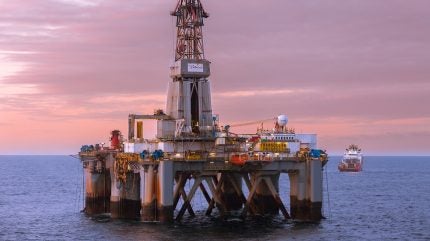
Aker BP has successfully confirmed the size of its gas discovery in the Norwegian Sea through appraisal well 6507/2-7 S.
According to the Norwegian Offshore Directorate (NOD), the well, located 230km west of Sandnessjøen and 12km west of the Skarv field, was drilled to a vertical depth of 5,098m and a measured depth of 5,140m subsea by the Deepsea Nordkapp rig.

Discover B2B Marketing That Performs
Combine business intelligence and editorial excellence to reach engaged professionals across 36 leading media platforms.
The well, part of production license 261, was terminated in the Åre formation from the Lower Jurassic age, with the water depth at the site being 340m.
Aker BP, as the operator, along with licensee Wintershall Dea (Harbour Energy), is considering the potential of tying the discoveries back to existing infrastructure in the area.
The appraisal well aimed to delineate the Storjo East and Kaneljo discoveries in Jurassic and Cretaceous reservoir rocks, respectively.
The operator has now narrowed the preliminary estimates for the exploration targets, placing the size of the discoveries at 2–8.7 million standard cubic metres of recoverable oil equivalent in the primary exploration target.

US Tariffs are shifting - will you react or anticipate?
Don’t let policy changes catch you off guard. Stay proactive with real-time data and expert analysis.
By GlobalDataThis refines the previous resource estimate for the primary target, which was 2.6–10.3 million standard cubic metres of recoverable oil equivalent.
The primary goal for well 6507/2-7 S was to prove gas in the Tilje Formation in the Lower Jurassic.
Aker BP encountered a 133m-thick gas column, with 43m in sandstone rocks of moderate to poor reservoir quality, and the gas/water contact was not encountered.
The secondary targets included proving gas in the Middle Jurassic Garn Formation and the Upper Cretaceous Lysing Formation.
The well encountered a 30m gas column in the Garn Formation and an 8m gas column in the Lysing Formation, both with varying reservoir qualities, without encountering gas/water contacts.
A production test in the technical sidetrack 6507/2-7 S T2 in the upper part of the Tilje Formation yielded a maximum production rate of 300,000 standard cubic metres of gas flow per day through a 20/64in nozzle opening.
Aker BP Recently entered into a partnership with TGS, an energy data and intelligence provider, to digitalise the Yggdrasil oil and gas area.
This collaboration is set to enhance field operations through the integration of advanced technology.





